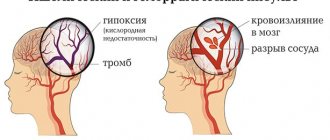The world-famous English writer Agatha Christie once remarked:
This is a strange world, where two people look at the same thing, but see the complete opposite.
Agatha Christie
It is amazing that all of us, so different, so special and individual, can get along in the same world, live in at least partial mutual understanding. But why are we so different? In fact, worldview plays a huge role in our lives. How is it formed? What does it represent? We will try to answer these and other questions further.
Concept of worldview
A person’s worldview is a complex mechanism that consists of ideas about the world around him and a system of moral values of a particular individual. This structure of the psyche combines opinions, actions and ethical standards that are acceptable for a particular person.
In other words, a worldview is a system of views on the world and the place of man, society and humanity in it, on a person’s relationship to the world and to himself, as well as the basic life positions of people corresponding to these views, their ideals, principles of activity, and value orientations.
Synonyms for the term “worldview” are worldview, worldview, attitude, mentality, way of thinking.
The main features of the worldview are systematic (static) and procedural (constantly in dynamics).
Factors in shaping worldview:
- The social environment in which a person finds himself.
- The social conditions in which the individual is placed.
- Political system.
Basic features of humanism
Humanism became the basis of the worldview of the Renaissance. The main features of humanism usually include the following:
- Interest in human needs is returning. Humanist philosophers were interested in the external appearance and spiritual content of man. They sought to study the achievements of the ancient classics.
- A cult of individuality is formed. Literature is recognized as an important tool for human upbringing.
- The exceptional role of poetry is recognized. Poetry embodied the synthesis of the best qualities of a person, and was an example of the most complete and successful form of expression of thoughts and feelings.
- There is a change in the philosophical system. Humanists deny the philosophical and theological basis of medieval thinkers, which was based on the teachings of Aristotle and his supporters. They study a person with his speech and actions, with the manifestation of his character and the results of his activities.
- The figure of the intellectual humanist is placed at the center of humanism as a system. He, declaring his individuality and defending it, tries to present his ideology, separating his views from other philosophers.
- The universality of humanistic values is accepted. Humanists violate class boundaries and present a teaching without class interests. They declare the universality of the human values they put forward, which have significant weight for all educated humanity.
- Conflicting relations with the authorities are developing. Many humanists relied on the support of those in power: lords, kings, papal legates. They always manage to avoid persecution from the church, so they have to hide, leave their homeland or move to the opposite camp.
Worldview structure
Worldview structure is what a worldview is made of. Worldview is formed from:
- knowledge;
- ideas;
- principles (point of view);
- convictions (steadfastness on any issue);
- ideals (goals);
- spiritual and moral values (that which has no monetary value);
- life attitudes.
A worldview cannot be formed once and for a lifetime; it is a gradual process. There are two ways to form it:
- spontaneous - based on everyday experience, under the influence of the surrounding life (solving a problem with a fight is bad, because at home and at school they scolded you for it);
- conscious - based on rational activity, which is aimed at understanding the world around us (“What you do will return to you” is part of Buddhist philosophy, which a person can come to through his observations).
Advantages and disadvantages
Despite the many advantages of everyday thinking, it also has a number of disadvantages:
The advantages of an ordinary worldview:
- helps to navigate in the present;
- allows you to understand a difficult life situation (predict the development of events, find a way out, anticipate possible consequences);
- helps to objectively assess the achievability of set goals,
- allows you to determine the desired development of events;
- helps to make forecasts for the future.
The disadvantages include:
- the experience and knowledge gained are often subjective in nature, since they are transmitted from the immediate environment with their individual beliefs and opinions;
- attitudes obtained on the basis of habits, superstitions, and subjective experience often run counter to scientific facts;
- the experience gained, which a person continues to rely on, may become irrelevant.
Levels of worldview
There are two levels of worldview:
- Everyday or everyday practical, which is formed in ordinary life. It is influenced by the emotional and psychological side, which is responsible for sensory knowledge of the world. Emotions and feelings act as sources of knowledge.
- Theoretical or rational, which is formed as a result of understanding the world by the mind. Associated with the cognitive-intellectual side. The sources are reason and mind.
Three functions of worldview
Worldview is an integral part of human life. Based on his worldview, a person makes decisions and acts.
A person's worldview has three functions:
- Cognitive - the worldview is not only formed from our knowledge, but also gives us knowledge.
- Value-orientation - the formation of a person’s life values.
- Practical - influence on human actions.
Elements of worldview
A person’s worldview can be divided into elements:
- Attitude is our emotions and feelings. The way we experience the world.
- Worldview is the picture of the world that a person has formed. The way a person relates to the world.
- Worldview - based on acquired knowledge and experience. The way a person looks at the world, his views.
- Attitude is a worldview and understanding of the world. That is, this is our attitude to the world and our system of views on any issues.
- Mentality is a worldview, but not of one person, but of a group of people (for example, a nation or ethnic group).
Examples from life
Examples of everyday worldview:
- Young women from a certain age strive to create a family union with a suitable partner. The indispensable desire to get married and subsequently have children is based both on everyday experience - the existence of a collective public opinion on this issue, the experience of the immediate environment (mother, grandmothers, sisters, friends), and on common sense.
The advantage of such a manifestation of an ordinary worldview is the desire of women to realize themselves as a wife and mother, to create a social unit of society.The downside is the presence of stereotypes in society, in response to which women often do not take into account their objective desires and views.
- Almost all people celebrate their birthday every year . Already at an early age, children, watching adults, receive information about the presence of such a day for each person. The belief is formed that a birthday is a special holiday on which it is necessary to organize a celebration and invite all close people to it. These people, in turn, should honor the birthday person and give him gifts.
- The need for basic daily self-care is also part of a person's everyday worldview .
This includes everyday habits such as brushing teeth, washing, combing, etc. The need to observe the rules of hygiene and keep one's body clean is instilled in children from early childhood. By observing adults and guided by common sense (being dirty is unpleasant and ugly), children adopt these attitudes and carry them into adulthood. The absence of such attitudes in a person’s everyday worldview will lead to his encounter with misunderstanding and condemnation in society.
Ways of thinking
The following ways of thinking can manifest themselves in a person’s worldview:
- Dogmatism is built on already existing dogmas, that is, rules and theories. For example, in a religious worldview, we take dogmas from religion and follow them. They guide our decisions and actions.
- Reasonable criticism - in this case we understand that worldviews can change. We question reality.
- Skepticism is when we doubt the very possibility of knowing the world or what we understand correctly. It is regular thought and reflection.
In the historical approach, there are 4 types of worldviews: mythological, religious, philosophical and scientific.
Initially, it was mythology that was the foundation on which the value system in society rested. It became one of the factors that determined people's behavior. The mythological worldview presupposes an emotional and imaginative vision of reality and endowing it with fantastic properties. In ancient times, emotional experience prevailed over rational experience and reflected a person’s fear of the unknown, unusual, and unfamiliar. It was difficult for people to correctly build cause-and-effect relationships, which is why they began to explain natural and social phenomena through fiction.
When primitiveness faded into the background, religion replaced myth. Unlike mythology, it brought with it dogmatism, a clearly formulated system of values and rules. Examples of right and wrong, good and bad, permissible and unacceptable have appeared. Then the deep questions of human existence (about origin, birth and death) found their answers in belief in the supernatural and, as a result, a religious worldview .
Later, philosophy arose, which was designed to structure and systematize various views on the world, society and man. to the forefront of the philosophical worldview .
The scientific worldview was the result of a theoretical understanding of the results of scientific activity - experiments, experiments, calculations. The scientific worldview reflects the generalized results of mankind’s knowledge of the world.
We can observe all 4 historical types of worldview today. They are reflected in how we relate to certain aspects of existence.
What it is?
All words associated with humanism are based on the Latin word “homo”, which translates as “man” .
This is partly due to the general meaning of the concept: humanism implies that life, and especially human life, is the highest value.
Partly, with the fact that such qualities as kindness, mercy, humanity are inherent only to people and belong to the highest human qualities, and are also closely related to the ideas that are included in the concept of “humanism”.
Humanism , a definition denoting a system in which human life, human comfort, his safety, freedom, health and happiness become the most significant and important.
This concept has a lot of other, narrower meanings, but the basics remain the same. Also, different philosophical movements interpret this definition in their own way.
For example, for Marxism , humanism has nothing to do with individualism, and social comfort is defined as more significant, and the comfort of individual people as less significant.
Most developed countries, one way or another, are humanistic.
The word “ humanity ” is equivalent in meaning to the more familiar word “humanity”, and denotes such highest qualities of people as mercy, willingness to support and help, respect, philanthropy, and the desire to choose the path of non-violence.
Different researchers, public and creative figures mean something different by humanity.
For example, Josh Walter believes that humanity implies non-violence, a willingness not to cause pain or discomfort to anyone to the extent that it is realistic to do so. He is of the opinion that humanity consists of three components :
- altruistic aspirations,
- moral,
- volitional efforts that allow a person to suppress his own negative qualities and choose the path of humanity.
Without them, he believes, there can be no talk of humanity.
Accordingly, people with a humanistic worldview :
- strive to renounce violence,
- believe that human life and happiness are the most important thing,
- in the process of life they try to restrain their own selfishness and other negative qualities and choose a path that meets their ideas about humanity and justice,
- accept the right of other people to live the way they want, as long as it does not harm anyone,
- are of the opinion that the state should create conditions for a comfortable, safe and happy life for people,
- realize that people are not ideal and have a lot of shortcomings, but they believe that in the process of development of human civilization it is possible to cope with many problems,
- We are convinced that a person’s abilities for creativity, self-development and adaptation have no limitations.
Many humanists consider themselves atheists and deny the existence of supernatural entities. They look at reality critically and encourage a scientific approach.
Despite the fact that there are religious forms of humanism, this ideology inherently has nothing to do with religiosity.
As already mentioned, the foundations of a humanistic worldview are laid in childhood : they explain to the child that causing harm is unacceptable, develop his empathy so that he can better understand those around him and be ready to provide all possible help to those who need it.










